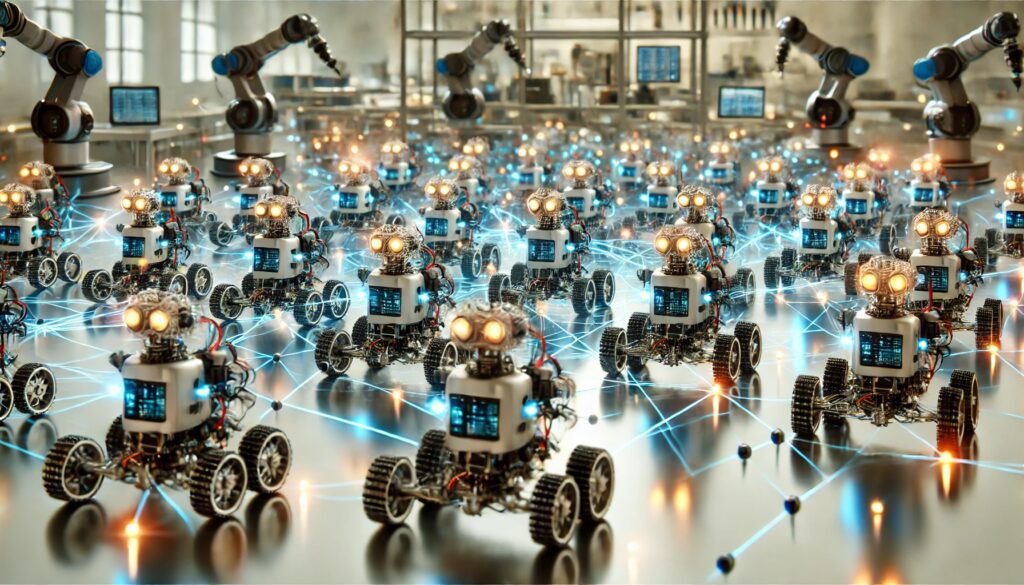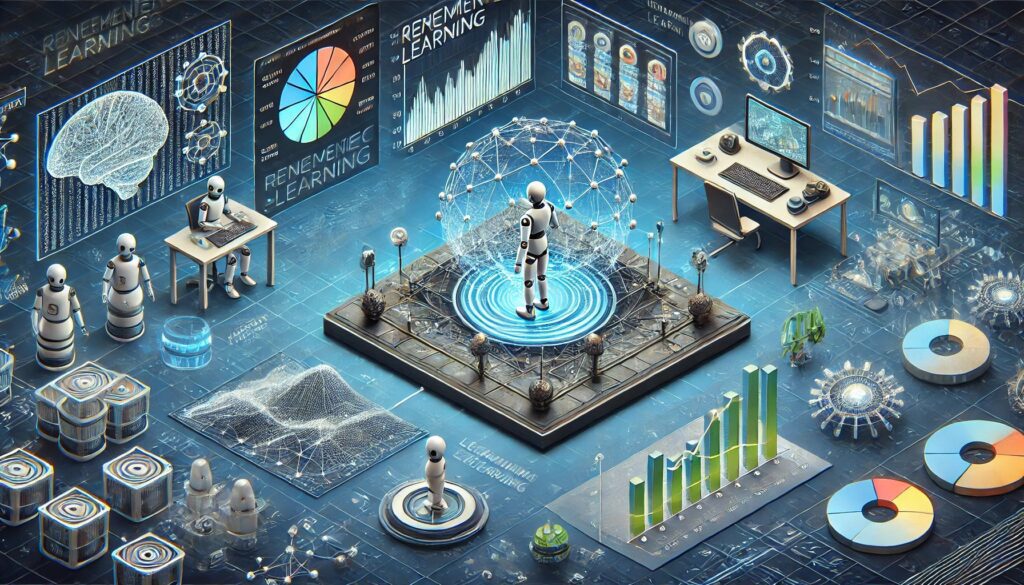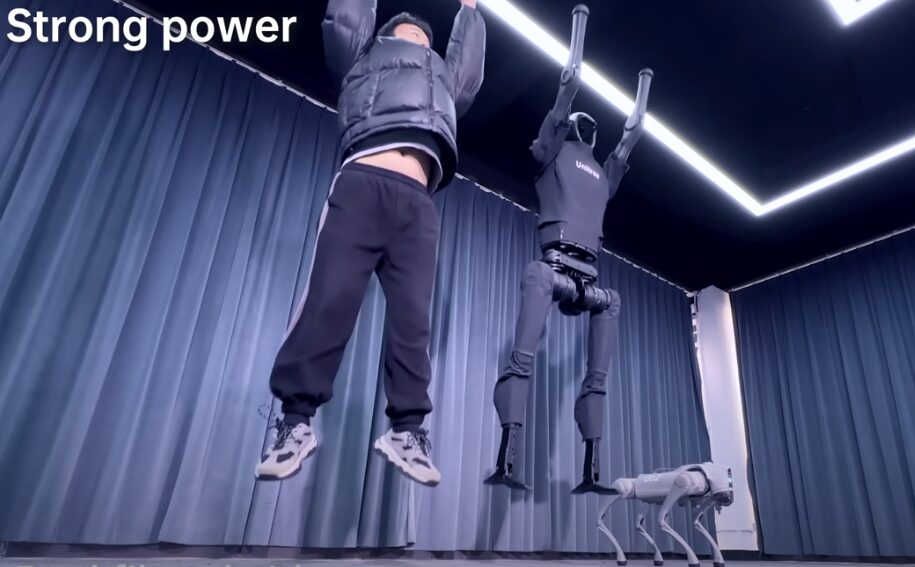
The Future of Swarm Robotics
Transforming Agriculture with Precision
Swarm robotics is revolutionizing agriculture by enhancing efficiency and productivity. Drone swarms are being utilized for precision farming, ensuring accurate planting, weeding, and harvesting. These drones monitor crop health in real-time, identifying issues like pest infestations and nutrient deficiencies, thus enabling timely interventions. This technology is not only increasing yields but also reducing the use of pesticides and fertilizers, contributing to sustainable farming practices.
Boosting Search and Rescue Operations
In search and rescue missions, swarm robotics offers unparalleled advantages. Coordinated robot swarms can efficiently search large areas in disaster-stricken zones, locate victims, and create detailed maps for rescue teams. Autonomous drones equipped with advanced sensors can navigate through challenging environments, providing real-time data and reducing the time taken to find and assist survivors.
Enhancing Environmental Monitoring
Environmental monitoring benefits immensely from the deployment of robotic swarms. These robots can perform tasks like pollutant detection and wildlife monitoring over extensive areas. For instance, aquatic robots are used to monitor water quality in lakes and rivers, providing data on parameters such as salinity and oxygen levels. This information is crucial for maintaining ecological balance and addressing environmental issues promptly.
Revolutionizing Construction and Maintenance
In the construction industry, swarm robotics is paving the way for innovative building techniques. Autonomous robots can collaborate to assemble structures, perform maintenance, and inspect infrastructure. This technology improves safety by reducing the need for human workers in hazardous environments and increases efficiency by allowing continuous operation without fatigue.
Advancing Healthcare with Nanobots
Healthcare is witnessing groundbreaking advancements with the use of swarm nanobots. These tiny robots can perform targeted drug delivery, ensuring medications reach specific cells or tissues, thereby minimizing side effects. Additionally, swarm robotics is enhancing hospital logistics by automating the transport of medical supplies and assisting in patient care, thereby improving overall efficiency.
Strengthening Military Capabilities
The military sector is leveraging swarm robotics for enhanced surveillance and reconnaissance. Autonomous UAV swarms can perform complex missions without central control, adapting to changing environments and threats. These swarms provide robust and resilient systems capable of completing missions even if some units fail, making them ideal for high-stakes operations.
Exploring Space with Robotic Swarms
In space exploration, swarm robotics holds the potential to transform how we explore other planets. Robotic swarms can autonomously map and survey planetary surfaces, conduct maintenance on space structures, and even assemble habitats for future human missions. This decentralized approach offers greater flexibility and redundancy, essential for the unpredictable conditions of space.
Key Technologies Driving Swarm Robotics
Communication Systems
Effective communication is the backbone of swarm robotics. Robust wireless communication protocols ensure seamless interaction among robots, enabling them to work in harmony. These systems must handle data traffic efficiently, ensuring low-latency data sharing to maintain synchronization and prevent conflicts.
Localization and Mapping
For swarms to navigate and perform tasks accurately, precise localization and mapping are essential. Utilizing GPS for outdoor environments and indoor positioning systems for confined spaces, robots can determine their exact location. Advanced techniques like SLAM (Simultaneous Localization and Mapping) allow robots to build and update maps of their surroundings in real time, enhancing their navigational capabilities.
Artificial Intelligence
Artificial intelligence (AI) plays a pivotal role in swarm robotics. Machine learning algorithms enable robots to recognize patterns and make informed decisions autonomously. Distributed AI facilitates decentralized control, allowing each robot to operate independently yet cohesively within the swarm, adapting to dynamic environments and optimizing task execution.
Sensors and Actuators
Equipped with advanced sensory inputs such as cameras, LIDAR, and thermal sensors, robots in a swarm can perceive their environment with high accuracy. These sensors gather crucial data, while precision actuators ensure coordinated movements, allowing robots to interact with their surroundings effectively and execute complex tasks with precision.
Energy Management
Efficient energy management is critical for the sustainability of robotic swarms. Strategies for efficient power usage and advanced battery management systems extend the operational life of robots. Innovative solutions like wireless charging and energy harvesting enable robots to recharge on the go, ensuring continuous operation without frequent manual intervention.
Challenges in Swarm Robotics
The real challenge of swarm robotics lies in managing large numbers of robots efficiently and ensuring system stability and robustness. As swarms scale, the complexity increases exponentially, requiring innovative solutions to maintain coherence and efficiency.
— Journal of Field Robotics
Scalability
Scalability is a major challenge in swarm robotics. As the number of robots in a swarm increases, managing them efficiently becomes complex. Ensuring system stability and robustness is critical. The system must remain reliable and perform well even as the swarm grows. This involves developing architectures that can handle large-scale operations without significant degradation in performance.
Coordination and Control
Effective coordination and control are essential for swarm robotics. Developing algorithms for task allocation that efficiently distribute tasks among robots is challenging. Preventing collisions and ensuring smooth operation in a dynamic environment requires sophisticated control mechanisms. Researchers are exploring various methods, such as bio-inspired algorithms, to achieve seamless coordination.
Robustness and Reliability
Robustness and reliability are crucial for the success of swarm robotic systems. These systems need to be fault-tolerant, capable of handling individual robot failures without compromising the overall mission. Implementing redundancy and self-repair mechanisms ensures that the swarm can continue functioning even when some units fail. This enhances the resilience of the system in unpredictable environments.
Cost and Resource Management
Balancing performance with cost-effectiveness is a significant challenge. Developing advanced swarm robotics systems can be expensive, and it is crucial to ensure that the benefits justify the costs. Efficient resource allocation among swarm members is also essential to maximize productivity and minimize waste. This involves optimizing the use of available resources and ensuring that each robot contributes effectively to the swarm’s objectives.
Future Directions in Swarm Robotics
1. Bio-Inspired Algorithms
One of the most promising directions for swarm robotics is the development of bio-inspired algorithms. By mimicking natural systems like ant colonies or bird flocks, researchers can create more efficient and adaptive robotic behaviors. Evolutionary algorithms are particularly useful for this purpose, allowing robots to evolve and adapt to changing environments through processes similar to natural selection. This approach not only enhances the adaptability of robotic swarms but also significantly improves their efficiency in performing complex tasks.
2. Human-Robot Interaction
As swarm robotics technology advances, improving human-robot interaction is crucial. Developing intuitive interfaces for controlling swarms will make it easier for non-experts to deploy and manage these systems. Moreover, ensuring safety and usability in human environments is essential, particularly as robots become more integrated into everyday life. This involves creating robust safety protocols and user-friendly control systems that can be easily understood and operated by humans.
3. Ethical and Legal Considerations
The rise of swarm robotics brings about significant ethical and legal considerations. For instance, privacy concerns in surveillance applications need to be addressed to prevent misuse of technology. Additionally, there is a pressing need to develop legal frameworks that govern the use of autonomous systems, ensuring they are used responsibly and ethically. Establishing clear guidelines and regulations will help mitigate potential risks associated with the widespread deployment of robotic swarms.
4. Interdisciplinary Research
The future of swarm robotics relies heavily on interdisciplinary research. Combining insights from biology, computer science, and engineering can lead to innovative solutions and advancements. Collaboration with experts in AI, robotics, and domain-specific applications will facilitate the development of more sophisticated and capable robotic swarms. This multidisciplinary approach is essential for overcoming current challenges and pushing the boundaries of what swarm robotics can achieve.
The future of swarm robotics is incredibly promising, particularly with the development of bio-inspired algorithms and improved human-robot interaction interfaces. These advancements will open new avenues for applications in agriculture, healthcare, and urban management.
— Swarm Intelligence Journal
Potential Research Projects in Swarm Robotics
1. Developing Swarm Coordination Algorithms
One of the most exciting research areas in swarm robotics is the development of swarm coordination algorithms. Focusing on decentralized control and task allocation is crucial to enhance the efficiency of these systems. By researching bio-inspired models like ant colony optimization, we can create algorithms that enable robots to coordinate effectively without centralized control. This approach mimics natural systems where simple rules lead to complex, adaptive behaviors.
2. Energy-Efficient Swarm Systems
Another vital area of research is energy-efficient swarm systems. Investigating methods to reduce energy consumption will prolong the operational time of robotic swarms. Exploring renewable energy sources and wireless charging technologies can provide sustainable power solutions. These advancements will be essential for applications requiring long-duration operations, such as environmental monitoring and search and rescue missions.
Innovations in energy management, including efficient power usage and wireless charging, are vital for the sustainability of swarm robotics. These advancements enable longer operational times and reduce the need for frequent human intervention.
— International Journal of Robotics Research
3. Swarm Robotics in Urban Environments
Swarm robotics holds significant potential for transforming urban environments. Studying the application of swarm robots for smart city initiatives can lead to more efficient management of urban infrastructure. Research on traffic management and infrastructure maintenance using robotic swarms can reduce congestion, improve safety, and ensure timely repairs. This research can pave the way for more intelligent and responsive urban systems.
Collaboration Opportunities in Swarm Robotics
1. Academic Institutions
Partnering with universities is essential for advancing research and development in swarm robotics. Universities provide a fertile ground for innovation, offering access to cutting-edge research and bright minds. Engaging with student projects and internships allows companies to tap into fresh ideas and emerging talent, fostering a collaborative environment that benefits both academia and industry. Universities like MIT and Stanford have strong robotics programs that can significantly contribute to advancements in swarm robotics.
2. Industry Partnerships
Forming industry partnerships is crucial for translating research into practical applications. Collaborating with tech companies can accelerate the development and deployment of swarm robotics solutions in real-world scenarios. Exploring opportunities in sectors like agriculture, healthcare, and logistics can lead to the creation of innovative products that enhance efficiency and productivity. For example, partnerships with companies like Boston Dynamics or DJI can lead to practical implementations of swarm robotics technologies in various industries.
3. Government and Defense
Working with governmental agencies can open up opportunities for public safety applications of swarm robotics. Engaging with defense organizations can drive strategic research that enhances national security and defense capabilities. Programs funded by agencies such as DARPA often focus on cutting-edge technology and can provide substantial resources and expertise to advance swarm robotics. For instance, collaborating with the U.S. Department of Defense can lead to the development of autonomous drones for surveillance and reconnaissance missions.
Conclusion
Swarm robotics holds great promise for a variety of applications, from agriculture to space exploration. By addressing the key challenges and leveraging interdisciplinary research, we can develop innovative solutions that enhance the capabilities of robotic systems and contribute to advancements in technology and society. Collaborative efforts across academic, industrial, and governmental sectors are essential to fully realize the potential of swarm robotics.
Resources
For further reading on these collaboration opportunities and ongoing research, you can explore the following resources:
- Frontiers: Comprehensive articles and research papers on advancements in swarm robotics.
- MDPI: Extensive journals on the theoretical and practical aspects of swarm robotics.
- Current Robotics Reports: Latest reports and findings on the applications and challenges in swarm robotics.
- SpikeGPT Language
- RTNet






